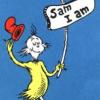-
Recently Browsing 0 members
- No registered users viewing this page.
-
Similar Content
-
- 58 replies
- 4,490 views
-
- 4 replies
- 2,411 views
-
- 35 replies
- 5,737 views
-
- 48 replies
- 3,903 views
-
Joseph Smith And Restoration Of Missing Characters In Sensen Lacunae
By DragonLancer,
- Book of Abraham
- KEP
- (and 2 more)
- 6 replies
- 1,450 views
-






Recommended Posts